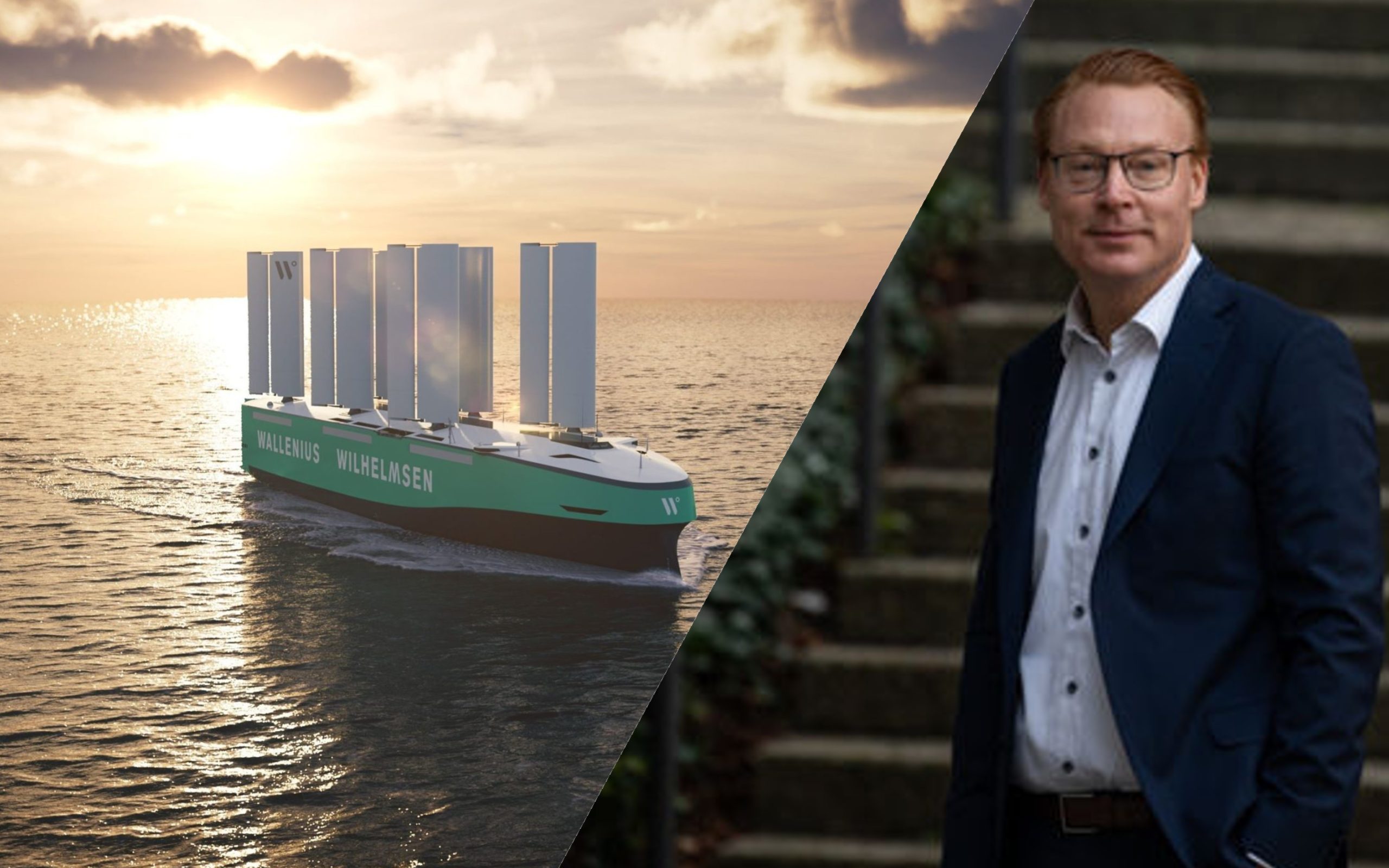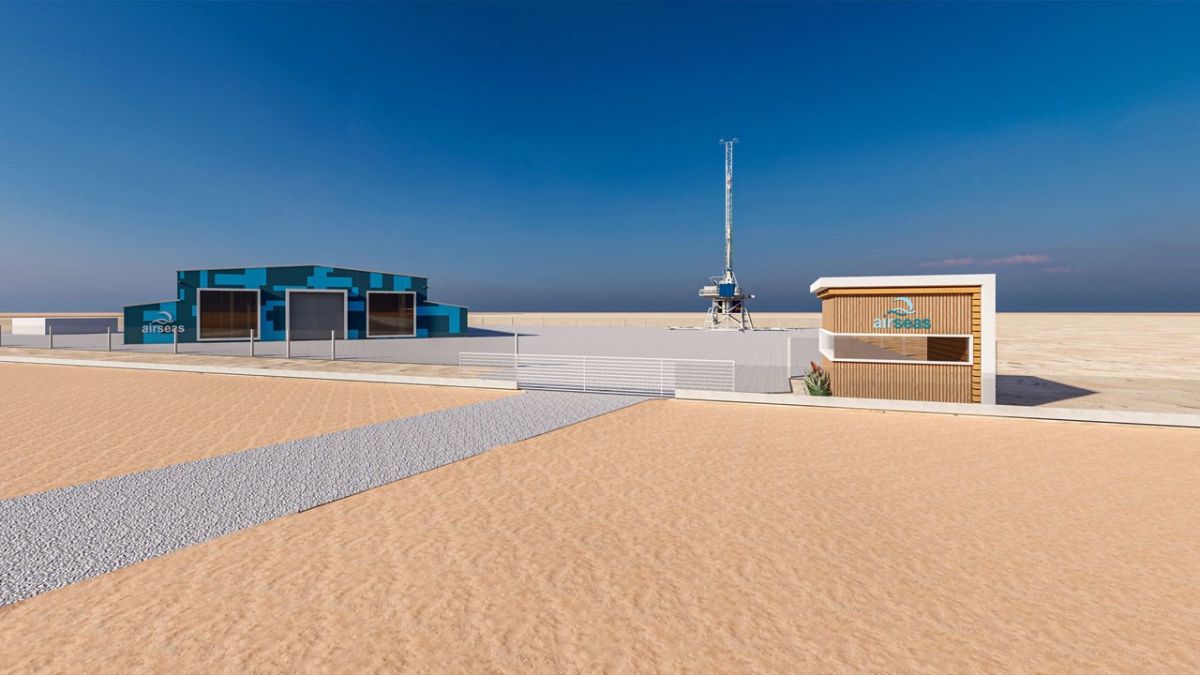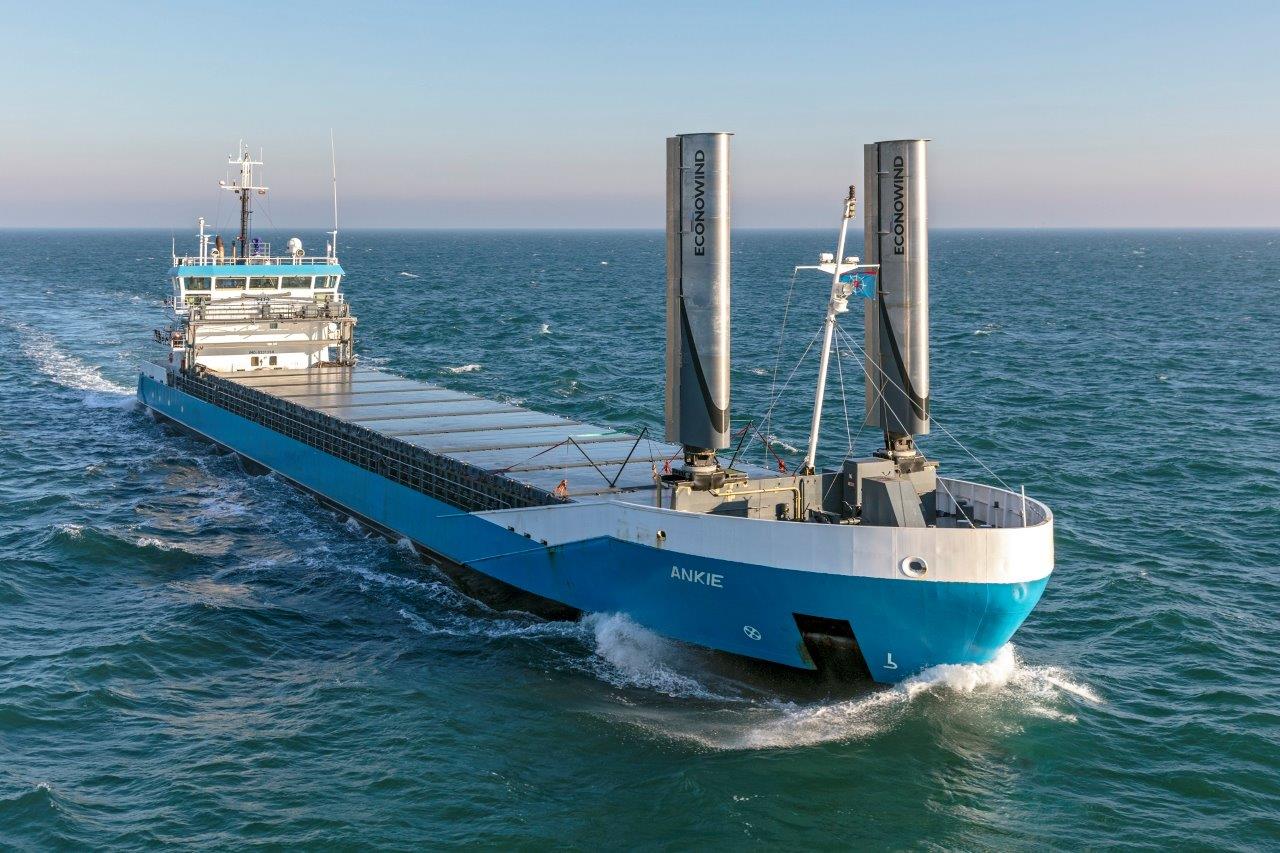With a 40 m high airplane wing like sail design Alfa Laval and Wallenius plan to enter the retrofit market while working on an optimised new car carrier design.
Yes, there really was a maritime press webinar from the virtual Abba stage in London. No, Abba was not there, neither in person nor as avatars. The event was less singing about a Waterloo and more Take a Chance on Wind
The event was Swedish in origin, to talk about the Orcelle Wind project and Oceanbird, two interlinked projects that are the latest in what seems to be a growing number of maritime wind propulsion projects being backed with European funds.
Oceanbird started life as a highly theoretical vessel design concept from Sweden’s Wallenius Marine and Norway’s Wallenius Wilhelmsen, and was in itself a development of the Orcelle concept that Wilhelmsen revealed over a decade ago – that Orcelle concept design is still in the reception of their Oslo head office.
Since revealing Oceanbird and getting some original funds from the Swedish Transport authority in 2019 to take the idea forward, the project developed waterborne scale models to help test the assumptions and modelling of a proposed telescopic 80 m wingsail atop a dedicated newbuilding design. The main idea was a newbuilding concept that could reduce fuel use by up to 90% and rely solely n the wind when deep sea.
Then in 2021 Alfa Laval came into the picture, and the re-emergence of a long standing partnership between Wallenius and Alfa Laval, two Stockholm, Sweden based companies who some may remember were the originators of one of the very first ballast water treatment technologies.
AlfaWall Oceanbird is the new commercial joint venture focusing on the wingsail design and it’s managing director Niclas Dahl has the job of bringing the concept to reality.
This has already meant one significant change, which is the addition of working towards the potential retrofit market as well as the newbuilding design.
In a call with Fathom World ahead of the press event and during it when discussing how the funding from Horizon Europe will be used Dahl referred to the opportunity to retrofit wind solutions on the existing fleet.
Being able to sell into such an existing market would certainly help ensure Ocean bird was financially sustainable while also offering environmental sustainability. This is also likely to be why the application for Horizon Europe funding included a proposal for a retrofit.
“This [funding] enables us to do both land based, full scale testing. And it also enabled us to do a retrofit installation to take step by step in order to have the best performance when we then go into the full sailing ship,” said Dahl.
“So the whole 9 million is a part of funding and working on how can we develop tools? And how can we develop the wings? And also how can we optimize and work on the logistic. So it’s actually the complete package for the for the for the total shape that is awarded for this? And then of course, ocean bird, we are one part of this. And that part is done mainly to focus on the on the wingsails”.
Working the design for economic and environmental sustainability
If you have been following the Oceanbird journey you may recall that the wingsail design was going to be massive, up to 80m in height. But thanks to tests with a scale model that has been seen sailing around the Stockholm archipelago the design is now smaller, more efficient and importantly, retractable.
The Oceanbird WIngsail has evolved he said. It started out as this 80 m high telescopic concept, which atop a high sided car carrier would give a significant height above sea level. The new design is significantly different in theat it is smaller, only 40 m high, and with a 14 m spread will offer 560 square meters.
The sail will still be retractable in that a flap behind the main sail offers the required asymmetric shape, or camber, which creates the combined resistance and thrust – it is the same principle of a yacht sail and a airplane wing where air pressure differences either side (or above and below in the case of the airplane wing) creates the required force.
The EU funding will be used for land based testing, furthering the Orcelle Wind design and to put a test rig onto a Wallenius vessel, the 2009 built 30,089 dwt Tirranna.
“I mean from a wing perspective, it’s also quite nice to start with the ro-ro”,” said Dahl. “Every type of ship has their own challenges when it comes to retrofitting. But ro ro vessels have the advantage that they are they have the bridge at the front so you don’t have any discussion about the line of sight. It’s also quite high up which means that you don’t need to take care of green seas when the water is flooding over the deck and so on.”
But from a stability point of view, with the high freeboard and air draft there will be other challenges.
“Of course from the stability point of view and these kind of things, and also the strength of the ship, that is, of course, more challenging on a ro-ro or a car carrier, and that is what we have been working on now – how to do that in order to generate the thrust and how to go through all the hazids and so you don’t end up with any problem and for stability, and so on”.
Dahl said there needs to be a balance struck between the optimum size of the wing system for performance, as well as material cost and sustainability of the the design.
“ We have looked into how we can optimize the performance. The trials will also help to understand the costs likely to be incurred in developing the first newbuild, something that has to be done and accounted for to build the business case for the product”, he said. “It’s great to do these things, but it also has to be a good fit for the customer. I’m confident that we will reach where it will be a good return on investment for our customers”.
Oceanbird/Orcelle programme Horizon Europe Partners
- Wallenius Wilhelmsen – project coordinator – a global roll-on/roll-off (RoRo) shipping company from Norway
- Wallenius Marine, a ship design and ship management company in Sweden
- AlfaWall Oceanbird, a 50/50 joint venture of Alfa Laval and Wallenius specializing in developing technology for wind-powered vessel propulsion
- Volvo Cars, one of the most well-known and respected car brands in the world
- StormGeo, a world-leading weather forecasting service provider, part of Alfa Laval
- Maritime CleanTech, an organization representing the Norwegian Maritime Cluster, focusing on sustainable innovation projects with commercial potential
- DNV, an international accredited registrar and classification society headquartered in Norway
- RISE Maritime, a Swedish company who is part of the Research Institutes of Sweden, they develop solutions for a sustainable and resilient maritime industry
- KTH Royal Institute of Technology, Sweden’s largest technical university
- UGent, a public research university located in Ghent, Belgium
- NTUA, an engineering university in Athens, Greece


































